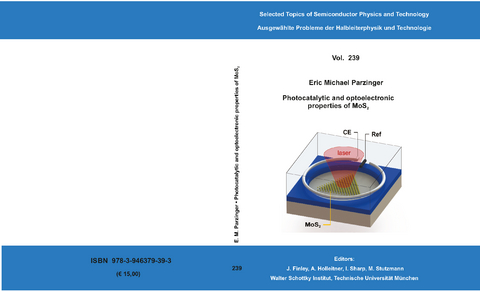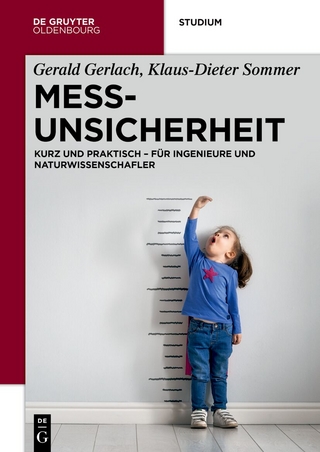
Photocatalytic and optoelectronic properties of MoS2
Seiten
2021
Verein zur Förderung des Walter Schottky Instituts der Technischen Universität München (Verlag)
978-3-946379-39-3 (ISBN)
Verein zur Förderung des Walter Schottky Instituts der Technischen Universität München (Verlag)
978-3-946379-39-3 (ISBN)
- Titel nicht im Sortiment
- Artikel merken
Transition metal dichalcogenides (TMDs) such as MoS2 represent a novel class of quasi two-dimensional (2D) materials with extraordinary physical and chemical properties. MoS2 is particularly suitable for the production of hydrogen and the use in optoelectronic circuits. In this thesis, we investigate both the photocatalytic as well as the optoelectronic properties of MoS2. First, we address the basic requirement of a photocatalytic material, stability under photocatalytic conditions. Employing µ-Raman spectroscopy in solution, we can site-selectively probe the stability of mono- and few-layer MoS2. We find that while the basal plane of MoS2 can be treated as stable under photocatalytic conditions, the edge sites and presumably also defect sites are highly affected by a photo-induced corrosion process. The corrosion can be understood in terms of oxidation of MoS2, driven by photoexcited charge carriers. The edge sites of monolayers are significantly more resistant, in agreement with an increased binding energy of photoexcited carriers in the single-layer limit. Further, we investigate the hydrogen evolution activity of individual mono-, bi- and multi-layer MoS2 flakes, with and without illumination. We demonstrate that the catalytic activity increases with decreasing number of layers. The onset potential scales accordingly due to hopping transport across inter-layer barriers within a multi-layer MoS2. Considering the edge-to-surface ratio, we show that the catalytic activity is most likely due to sulfur defects in the basal plane. For the integration of MoS2 into optoelectronic circuits, the creation of well-defined contacts between 2D materials and metal leads is crucial. We reveal that focused laser illumination, used in many standard optoelectronic measurements, modifies and anneals the MoS2-metal contact interface. This induces a significant change of the charge carrier density of single-layer MoS2, resulting in the formation of an effective junction at the contact region with lateral built-in fields. However, we find no evidence for a phase transition of the MoS2 monolayer. Lastly, we utilize THz stripline circuits to resolve the ultrafast photoconductance dynamics of monolayer MoS2. The photocurrent response is discussed within the scope of recent works on drastic changes of the band gap and the exciton binding energies of photoexcited TMDs with ultrafast non-radiative relaxation processes. We resolve three time scales governed by fast relaxation mechanisms followed by a subsequent transfer of the photo-induced excess energy to the phonon bath. Using metal leads with reduced contact resistance, we find that the largest contribution to the photocurrent signal is comprised of a long-lasting bolometric response. The results presented in this work underline the potential of MoS2 for photocatalytic applications and give fundamental insights into the ultrafast dynamics of photogenerated charge carriers in contacted TMDs.
| Erscheinungsdatum | 30.01.2021 |
|---|---|
| Sprache | englisch |
| Maße | 150 x 210 mm |
| Themenwelt | Naturwissenschaften ► Physik / Astronomie |
| Schlagworte | optoelectronics • photocatalysis • transition metal dichalcogenide |
| ISBN-10 | 3-946379-39-7 / 3946379397 |
| ISBN-13 | 978-3-946379-39-3 / 9783946379393 |
| Zustand | Neuware |
| Haben Sie eine Frage zum Produkt? |
Mehr entdecken
aus dem Bereich
aus dem Bereich
von den Werkzeugen über Methoden zum TQM
Buch | Softcover (2024)
Springer Fachmedien (Verlag)
32,99 €
kurz und praktisch - für Ingenieure und Naturwissenschafler
Buch | Softcover (2024)
De Gruyter Oldenbourg (Verlag)
44,95 €


